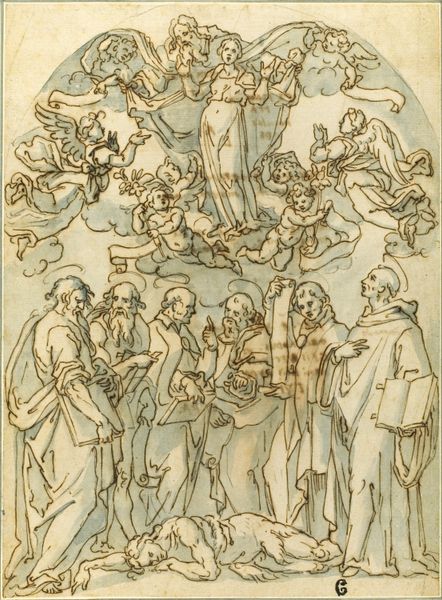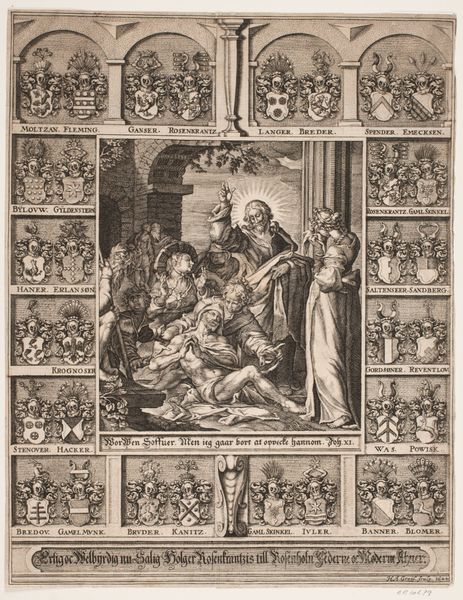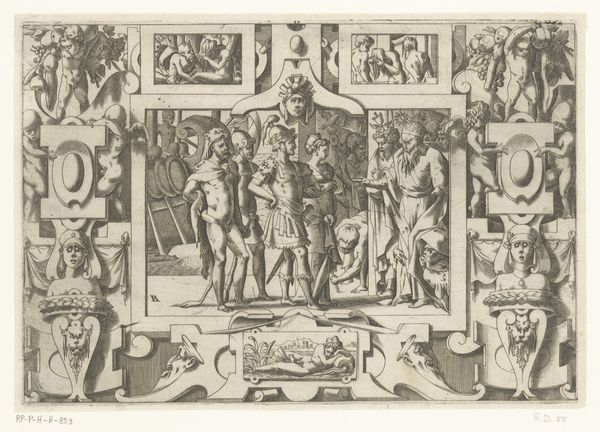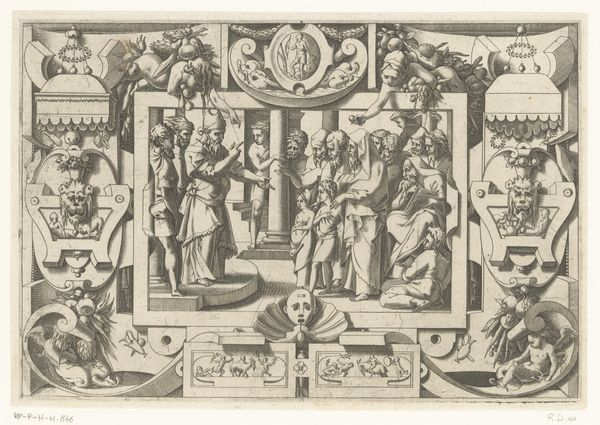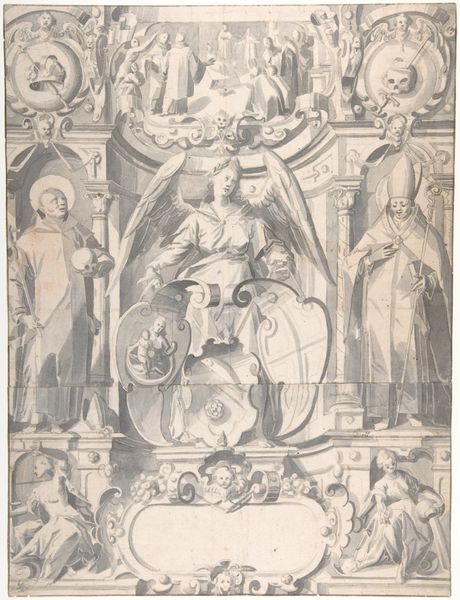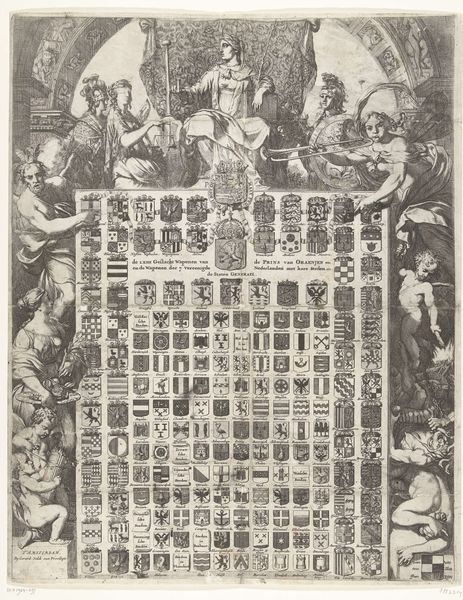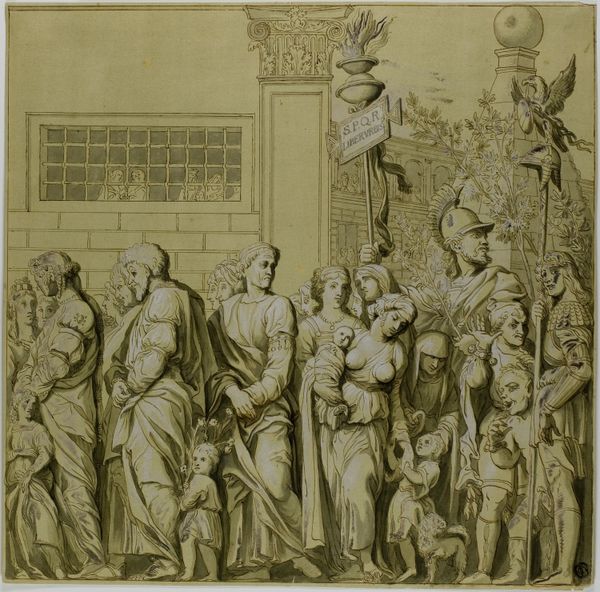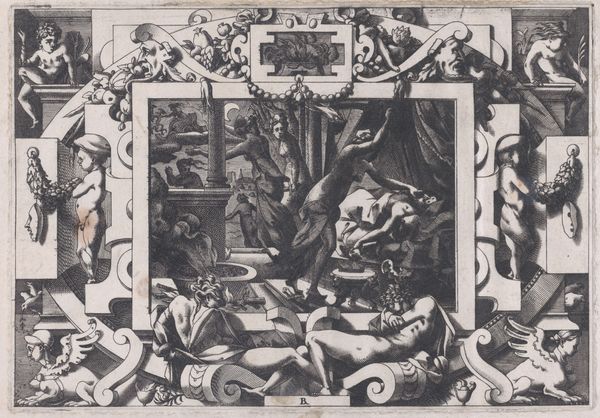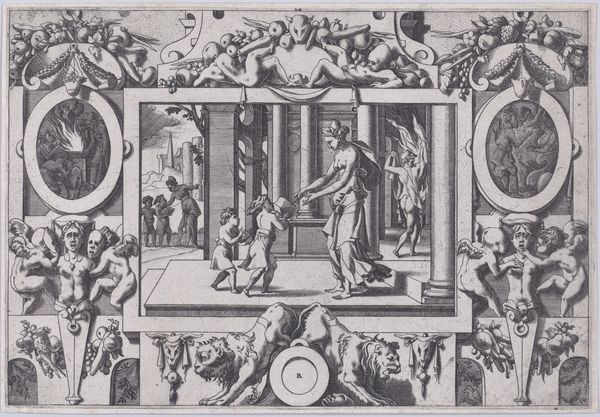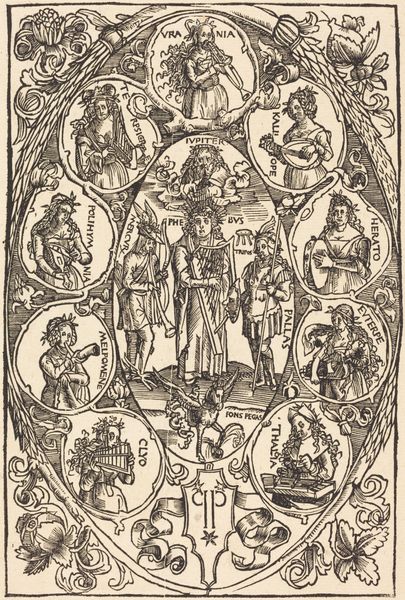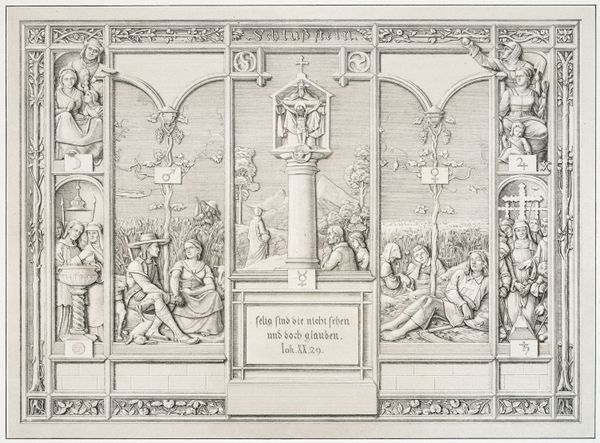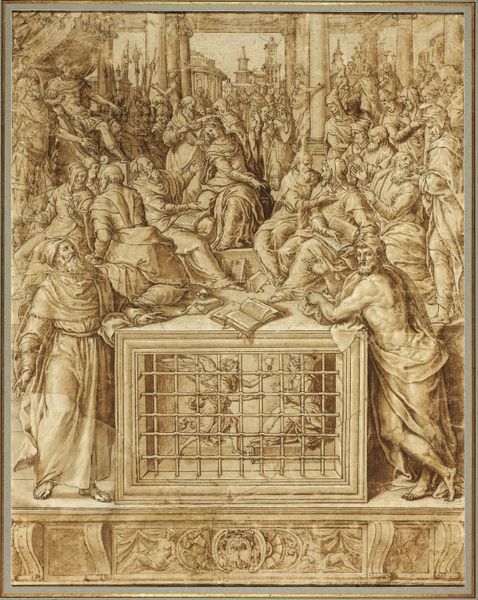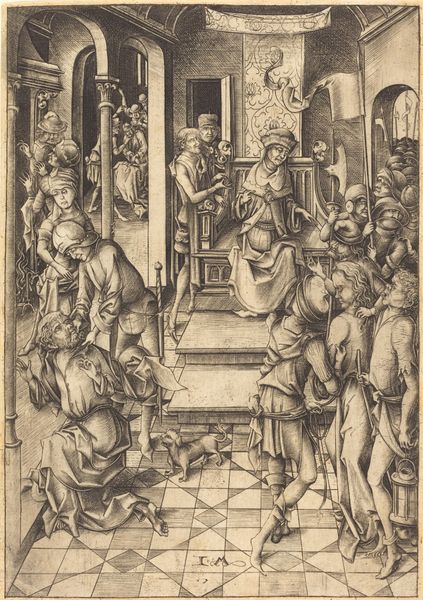
tempera, painting, oil-paint, mural
#
portrait
#
tempera
#
painting
#
oil-paint
#
figuration
#
11_renaissance
#
history-painting
#
academic-art
#
italian-renaissance
#
mural
Copyright: Old Masters 1300 - 1800
Curator: At first glance, these panels strike me as unexpectedly joyous given their subject matter. There's a rhythm and lightness in the composition. Editor: We're looking at the "Exterior Wings of the Frankfurt Dominican Altarpiece" created around 1501 by Hans Holbein the Elder. The altarpiece is currently held at the Städel Museum. It is painted with tempera and oil on wood, depicting the ancestry and legacy of the Dominican order. For its time it's daring work of art, placing sainthood and scholarship on equal footing. Curator: I notice the repeating motif of figures emerging from what look like stylized grapevines, is this to create a family tree-like visual framework to trace the lineage of knowledge? It visually binds the figures, some of whom I suspect might be founders or scholars, in a shared, intellectual lineage? Editor: Precisely. The grapevines symbolize the "tree of Jesse," connecting them to both religious and intellectual ancestry. This choice would remind the faithful of both spiritual guidance, with specific saints as mediators to God. I wonder about what role the materiality itself, oil paint on wood, played? How do these panels act as carriers of cultural and religious weight for its time? Curator: Well, wood, of course, directly links it back to the cross and thus Christ’s sacrifice, so from a symbolical perspective that’s quite evocative. Moreover, the combination of tempera and oil offers a remarkable range of both detail and luminosity—qualities meant to visually communicate the brilliance of holiness, and also humanistic enlightenment. Editor: Looking closer, the clothing and the color used appear meticulously selected for each person featured in each of these sections. The garments point towards individual rank and role but are still harmonious. It appears the Dominican order's story is shown like any family tree. Curator: Absolutely, a visual declaration that this spiritual and intellectual heritage is as meaningful and legitimate as any bloodline. Editor: Examining its art historical and sociological place, I see it operating on multiple registers as both an intimate family and a powerful symbol. Holbein, for me, emphasizes the importance of community building in times of socio-religious reform. Curator: And I notice in it Holbein’s attention to enduring concepts, bridging the human with the divine in memorable imagery. These exterior panels are a thoughtful fusion of both sacred ancestry and humanist progress.
Comments
Join the conversation
Join millions of artists and users on Artera today and experience the ultimate creative platform.
